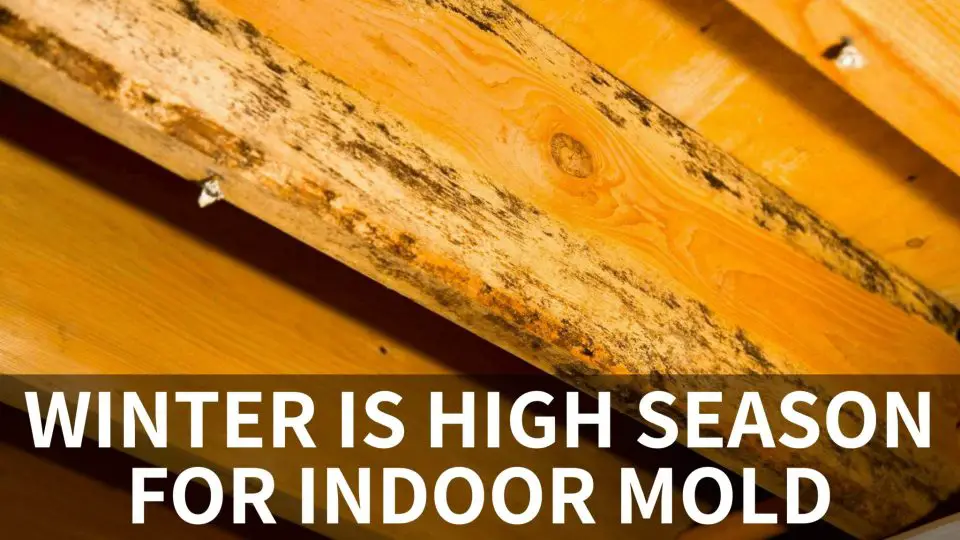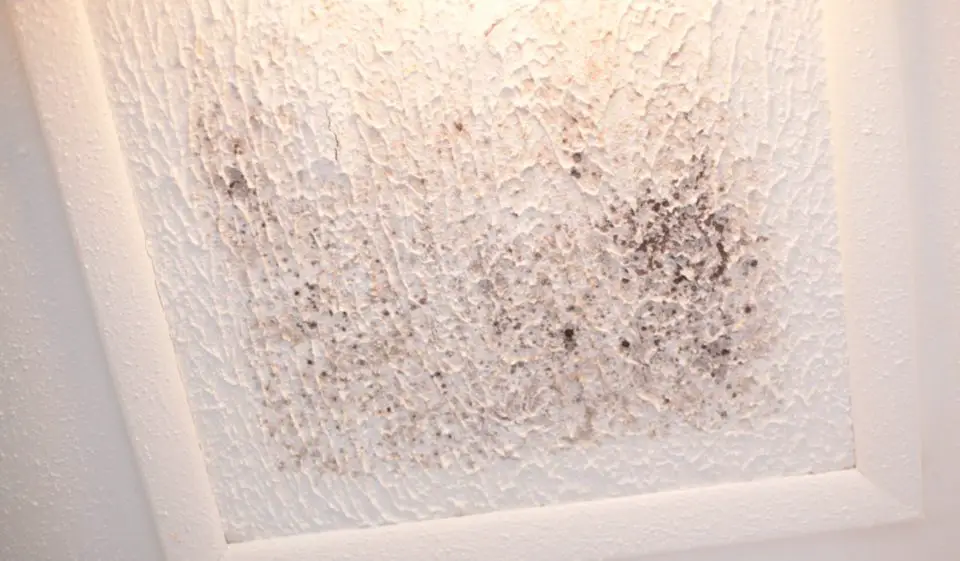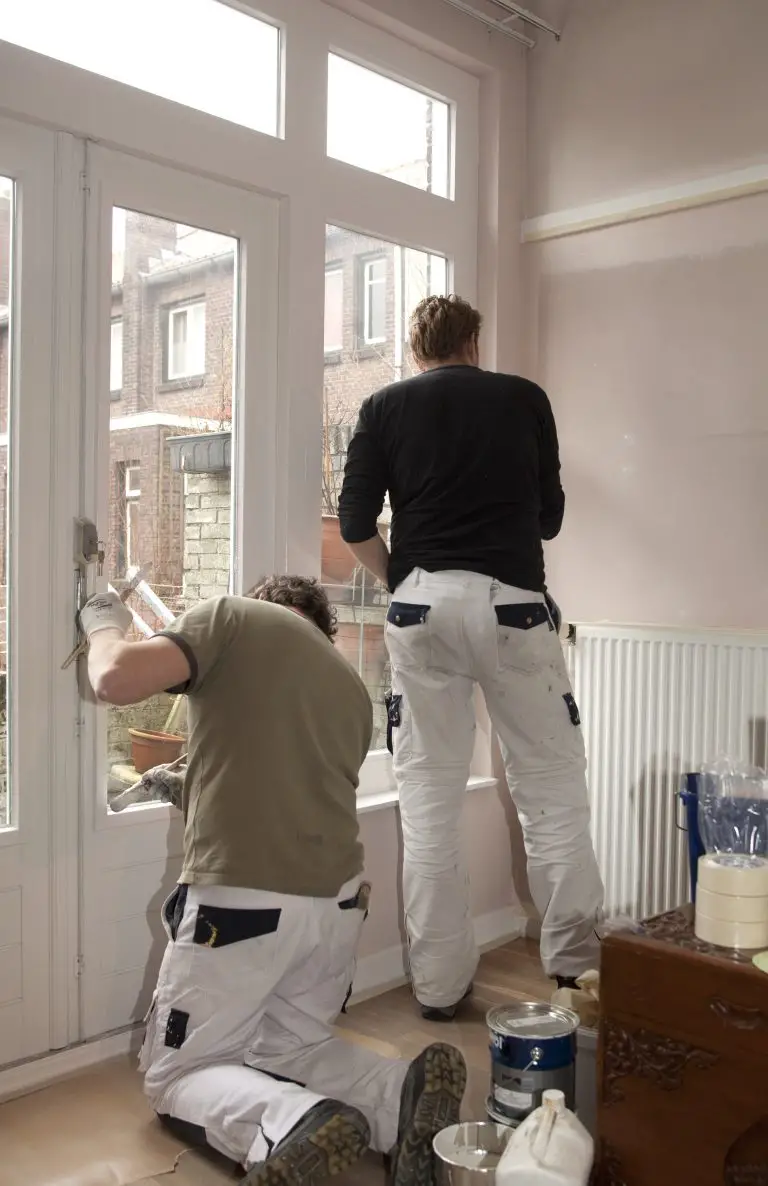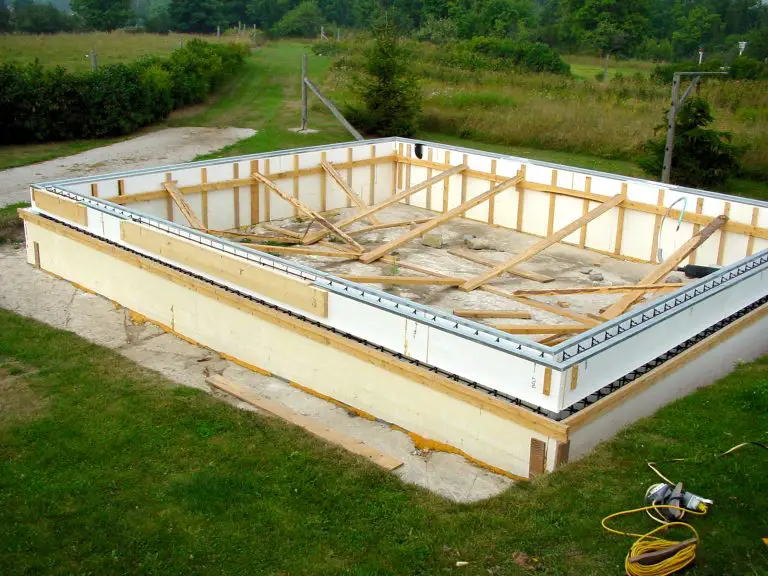
- Video Watch Time = 1 1/2 minutes
Cold winters present plenty of challenges, and one of the most widespread is indoor mold growth. Unlike warmer parts of the world where mold grows mostly during humid, summertime weather, winters are the primary household mold season for people like me who live in cold climates. And since windows are closed and we spend lots of time indoors, household mold can also bring significant indoor air quality issues, too. Understanding the causes of winter mold growth and the solutions is something that can make a big difference to your health.
Why Winter Indoor Mold
Temperature differences between indoor and outdoor spaces can cause condensation and this is why winter is a mold-prone time of year in cold climates. And the wider the temperature difference between indoors and outdoors, the more mold pressure develops. The reason is because of a peculiar trait of air. The cooler the air is, the less moisture it can hold. Whenever warm, indoor air is allowed to make its way into cooler areas around windows, inside wall cavities and in attics, the ability of that air to hold moisture declines.
Indoor air with a comfortable level of 50% relative humidity at 22ºC, for instance, will rise to 100% relative humidity when that same air cools to just 11ºC, all else remaining equal. Any further cooling will result in the formation of water droplets appearing out of nowhere on surfaces. Mold can typically only grow in the presence of sufficient moisture, but as soon as that moisture appears, mold flourishes. This dynamic of cooling and condensing is why your windows might get wet on the inside during cold weather, and why mold develops inside wall cavities that don’t have an effective vapour barrier. Even poorly insulated walls can develop visible mold on interior surfaces when the weather gets cold enough outside and furniture placement prevents the circulation of warm air in those areas. If mold ever grows on your walls in winter, it’s almost always behind a couch or dresser.
The video below shows the importance of a completely sealed vapour barrier, especially when it comes to preventing condensation and mold growth within wall cavities.
Eliminating Winter-Related Indoor Mold
If your house grows mold in winter, the solution is two fold. First, you need to lower indoor humidity levels. This is something of a balancing act, because the level of humidity we want indoors for comfort is almost always higher than the level of indoor humidity that’s ideal for our home. A house that’s got an ideal humidity level for structural integrity during winter will usually feel somewhat too dry for the humans living there.

Reducing Wintertime Indoor Humidity Levels
The ideal way to reduce indoor humidity levels in winter is with a heat recovery ventilator (HRV). This permanently installed ventilation device swaps stale indoor air for fresh outdoor air, all while retaining most of the heat invested in the indoor air before shooting it outside. Don’t bother trying to reduce indoor humidity levels in winter with a dehumidifier. They can’t reduce humidity levels enough to stop wintertime condensation, they use way more electricity than an HRV, and dehumidifiers make more noise.
The only problem with an HRV is the cost. You’ll spend about $2000 to get one installed. If you don’t have that kind of dough handy, simply run your household exhaust fans more often. Bathroom fans and kitchen range hoods can do a lot to reduce indoor humidity levels. For every cubic foot of air they expel from the building, a cubic foot of fresh, cold outdoor air must come inside through gaps and cracks. As this air warms up, its relative humidity plummets, making your home drier. This approach does increase heating bills somewhat, but this is worth it if you can stop mold formation.
The second part of the mold solution involves preventing warm indoor air from getting to places where it can cool and condense. Uninsulated attic hatches are a classic place for mold to grow in winter because they get so cold. That’s what you see above. It’s the bottom face of an attic access hatch that’s uninsulated and cold because of the attic above in winter. This cold surface triggered chronicle condensation that allowed mold to grow. Click here for a video to learn more about mold and how to get rid of it in your home.












